► £40k-£50k family friendly SUV, driven in the UK
► A total of six engines to choose from
► Vast amount of cabin space; not much excitement
The new Volkswagen Tayron arrives in a hotly contested part of the market – the large seven-seater family SUV sector – where some of the best new cars of recent years have emerged. With rivals ranging from plug-in hybrids and diesels to an increasing number of full-electric family SUVs, the Tayron certainly has its work cut out making an impact.
It replaces the Tiguan Allspace in VW’s line-up and slots in neatly between the standard five-seat Tiguan and larger, more expensive Touareg. It’s designed to offer space, refinement and usability for growing families, but unlike some flashier rivals, it keeps things deliberately low-key, with flashes of traditional Volkswagen design language and interior functionality.
This is a Volkswagen that’s happy to be sensible. It doesn’t shout about itself, doesn’t chase gimmicks, and instead focuses on quietly doing the job. Gone are many of the irritations and oddities that have crept into recent VWs – replaced by a car that doesn’t necessarily do anything revolutionary, but nails the brief of being a calm, comfortable and practical everyday SUV. It’s an exercise in restraint, and that’s no bad thing.
At a glance
Pros: Family friendly with a decent amount of space in the sliding middle row seats, excellent ride quality, refined cabin, build quality, large range of engines
Cons: Inert steering and dull – albeit very capable – chassis, middling performance, soft brake pedal in PHEV
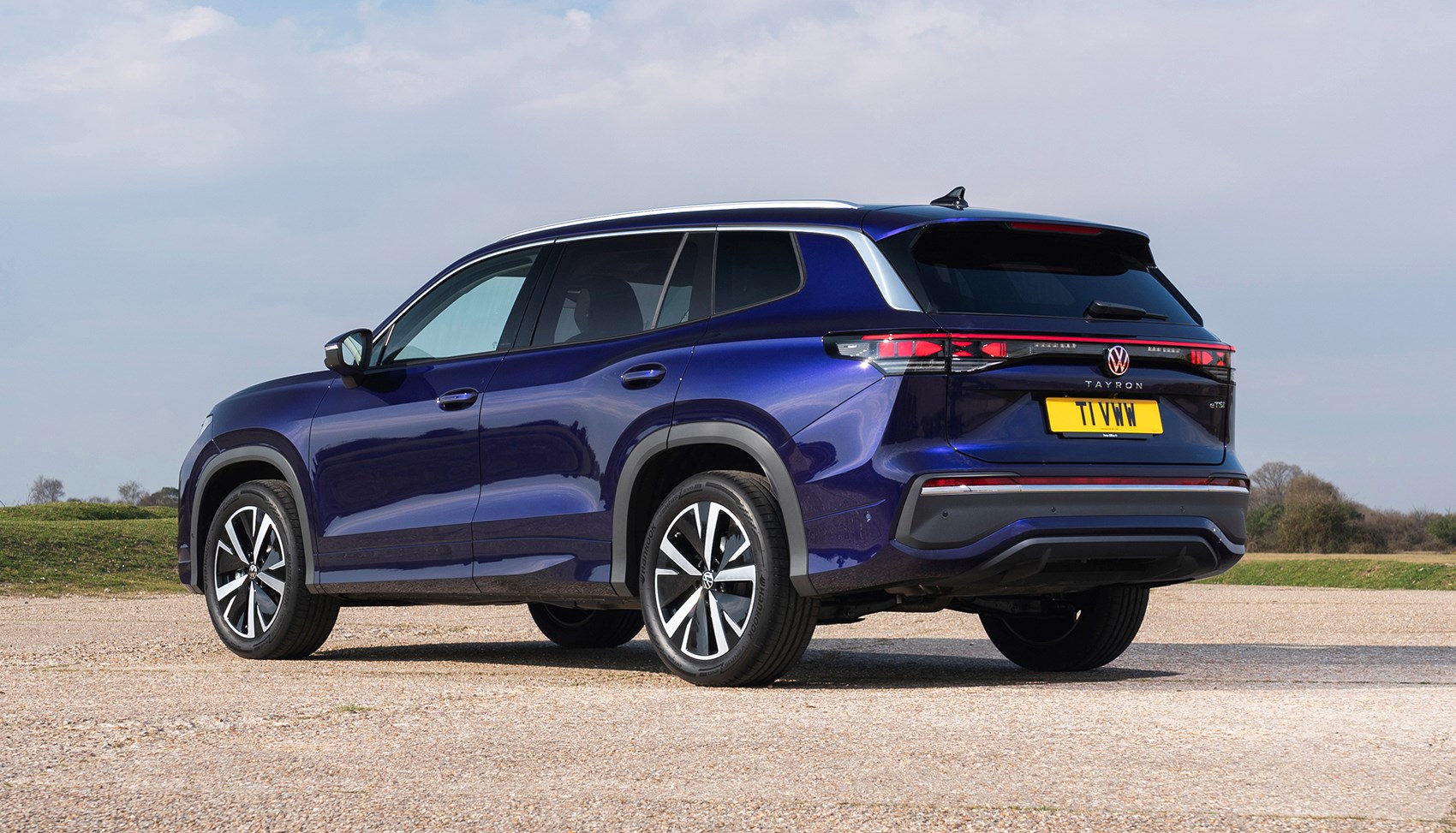
What’s new?
Riding on the same MQB Evo platform as both the Tiguan and Passat, the Tayron gets a bespoke and quietly handsome body and an extra 112mm in the wheelbase compared to the regular Tiguan SUV. That makes a noticeable difference in legroom, especially in the middle row, where passengers benefit from a sliding seat.
Available in both seven- and five-seat configuration (five seats in PHEVs due to the larger battery), the Tayron gets all the latest VW design signatures, including the full-width LED crossbar at the rear and illuminated VW logos at both ends.
Pub quiz bonus: this is the first ICE (internal combustion engine) Volkswagen in Europe to feature illuminated badges front and rear – something not even the latest Golf 8.5 can claim at both ends.
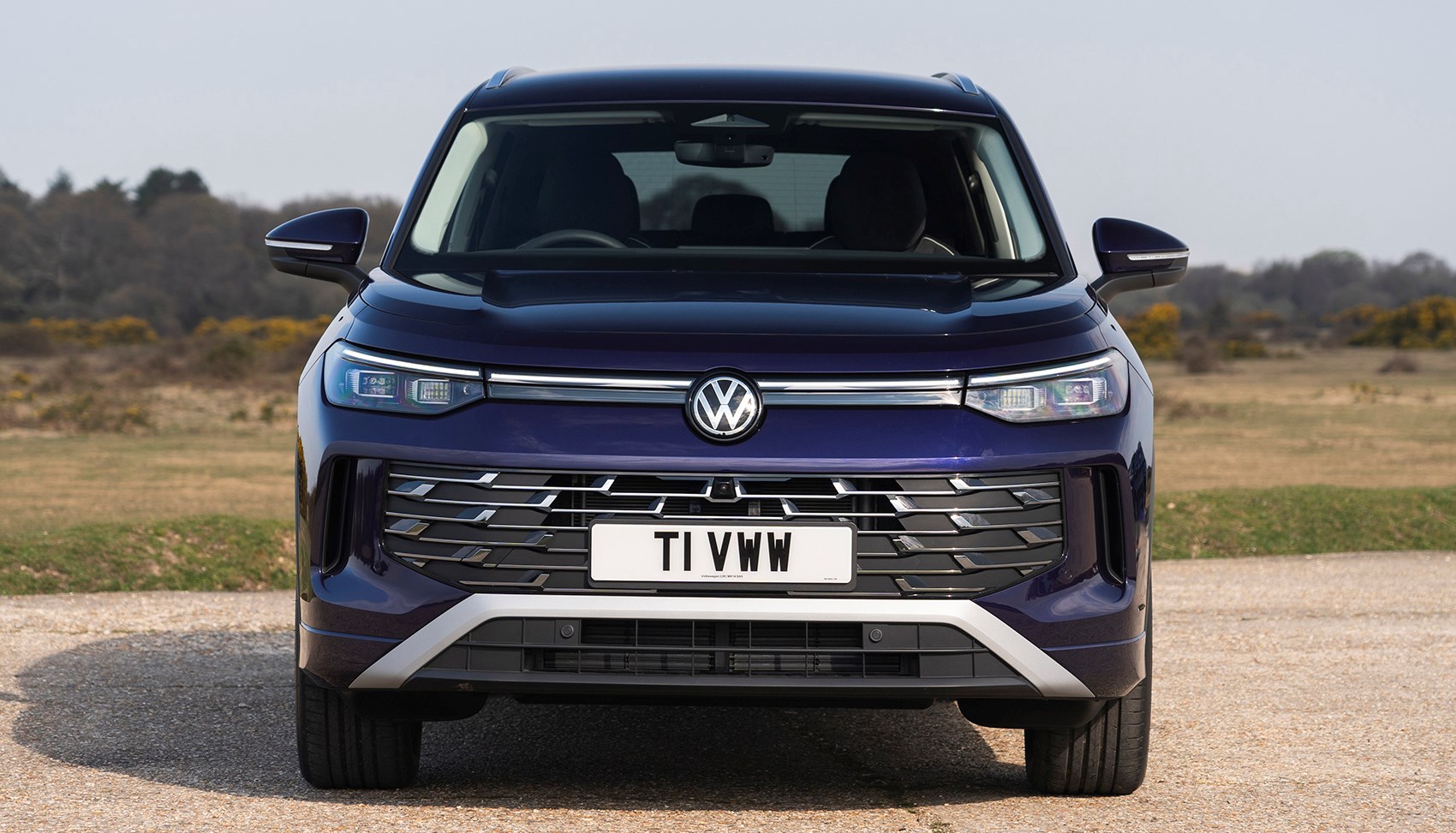
What are the specs?
UK buyers get a broad range of six engines, with prices starting from £39,955 for the 1.5 eTSI Life and rising to £50,780 for the PHEV R-Line Edition. These include a 1.5-litre mild-hybrid petrol with 148bhp, a 2.0-litre petrol in 200 and 260bhp outputs (both with all-wheel drive), and a 2.0-litre diesel with 148bhp.
The PHEV range features two variants based on the 1.5 TSI engine, with 200 and 268bhp respectively, both offering a claimed electric-only driving range of up to 62 miles thanks to a generously-sized 19.7kWh battery. It’s more than you’ll get from rivals like the Kia Sorento and on a par with the platform-sharing Skoda Kodiaq iV.
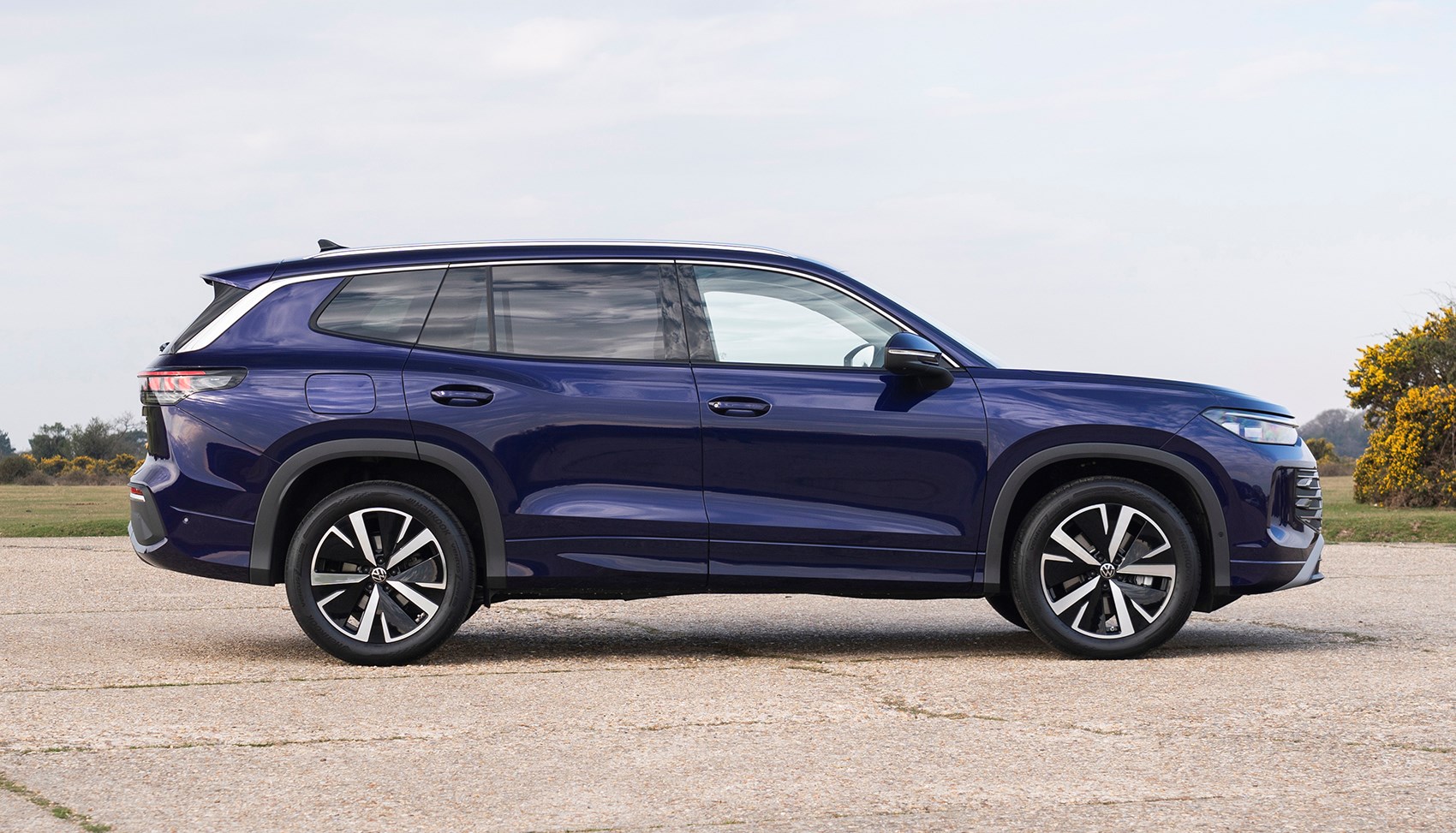
All Tayrons come with a DSG twin-clutch transmission, either six- or seven-speed depending on the powertrain. CO2 emissions start at just 10g/km for the PHEVs, placing them in the 2% Benefit-in-Kind tax bracket, and rise to 198g/km for the more powerful petrol models. As much as that low emissions rating and claimed mpg figures for the PHEV appeal, real world figures will be rather more telling.
Trim levels follow a familiar VW structure. The entry-level Life comes equipped well enough for most families, with Match offering additional touches like larger wheels and keyless entry. Elegance trims focus on comfort, while R-Line models adopt a sportier look. At the top of the tree sits the R-Line Edition, with black styling elements and 20-inch alloys.
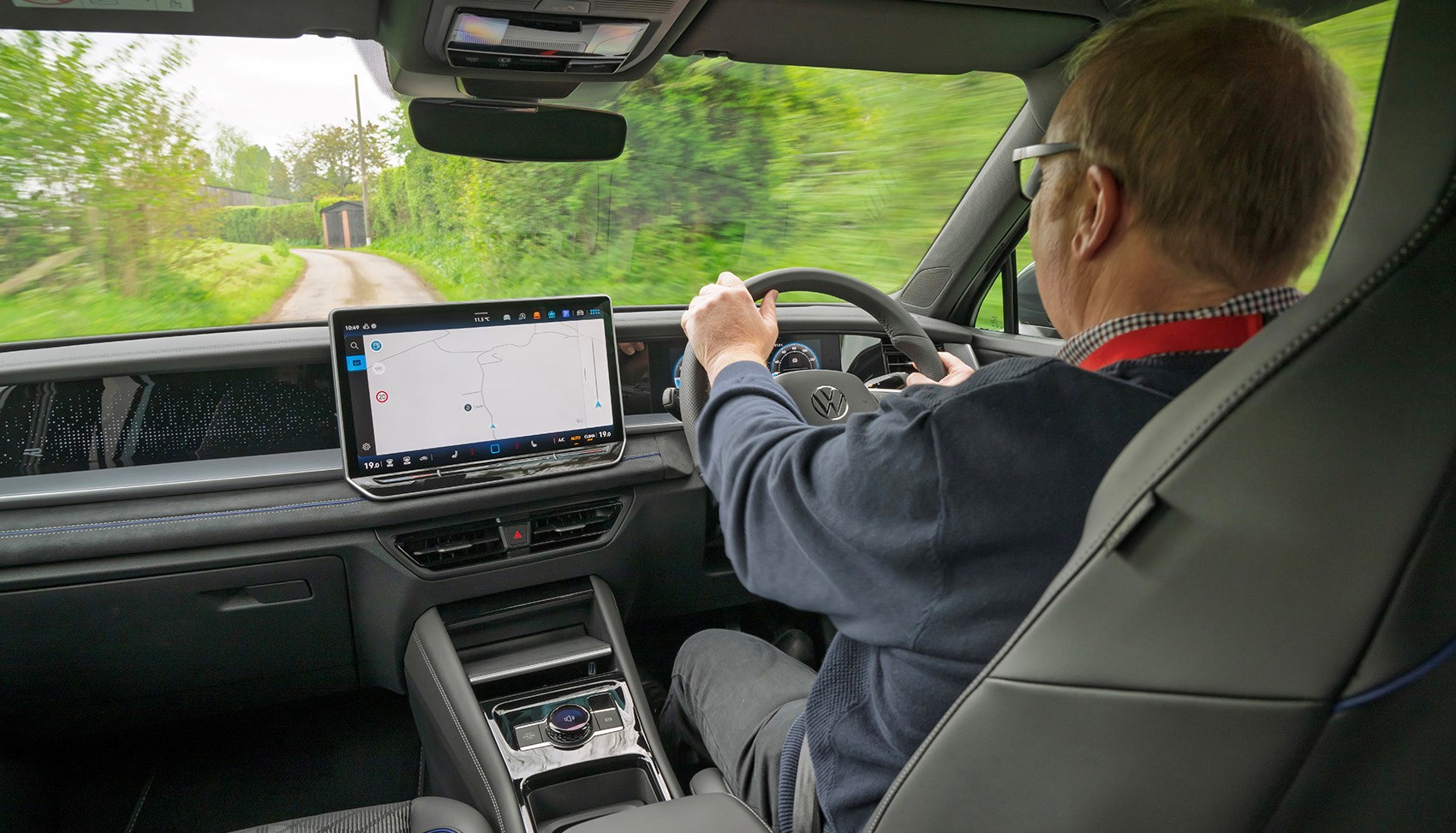
What’s it like to drive?
We came away from the international launch with the impression that the Tayron behaves in an entirely predictable way on the road, but in some ways that sells it short. This is probably down to the smooth continental roads we originally drove it on – which is a marked point of difference to how things are here in dear old Blighty.
We’ve now tried a selection of Tayrons. Initially, we drove the diesel (148bhp, 50.9mpg WLTP Combined) and the higher-powered plug-in hybrid (272bhp, 625mpg WLTP – though real-world returns depend heavily on your charging habits) at the international. They’ve now been joined by the lower-powered hybrid (200bhp, 614mpg WLTP) and 1.5 eTSI (148bhp, 42.9mpg WLTP) on UK roads.
Of the quartet, the diesel remains a rock solid pick for long-distance drivers and those who need to tow, while the PHEV works best for those with short commutes and a driveway charger. The entry-level eTSI is an appealing all-rounder if you don’t mind working it hard to make headway.
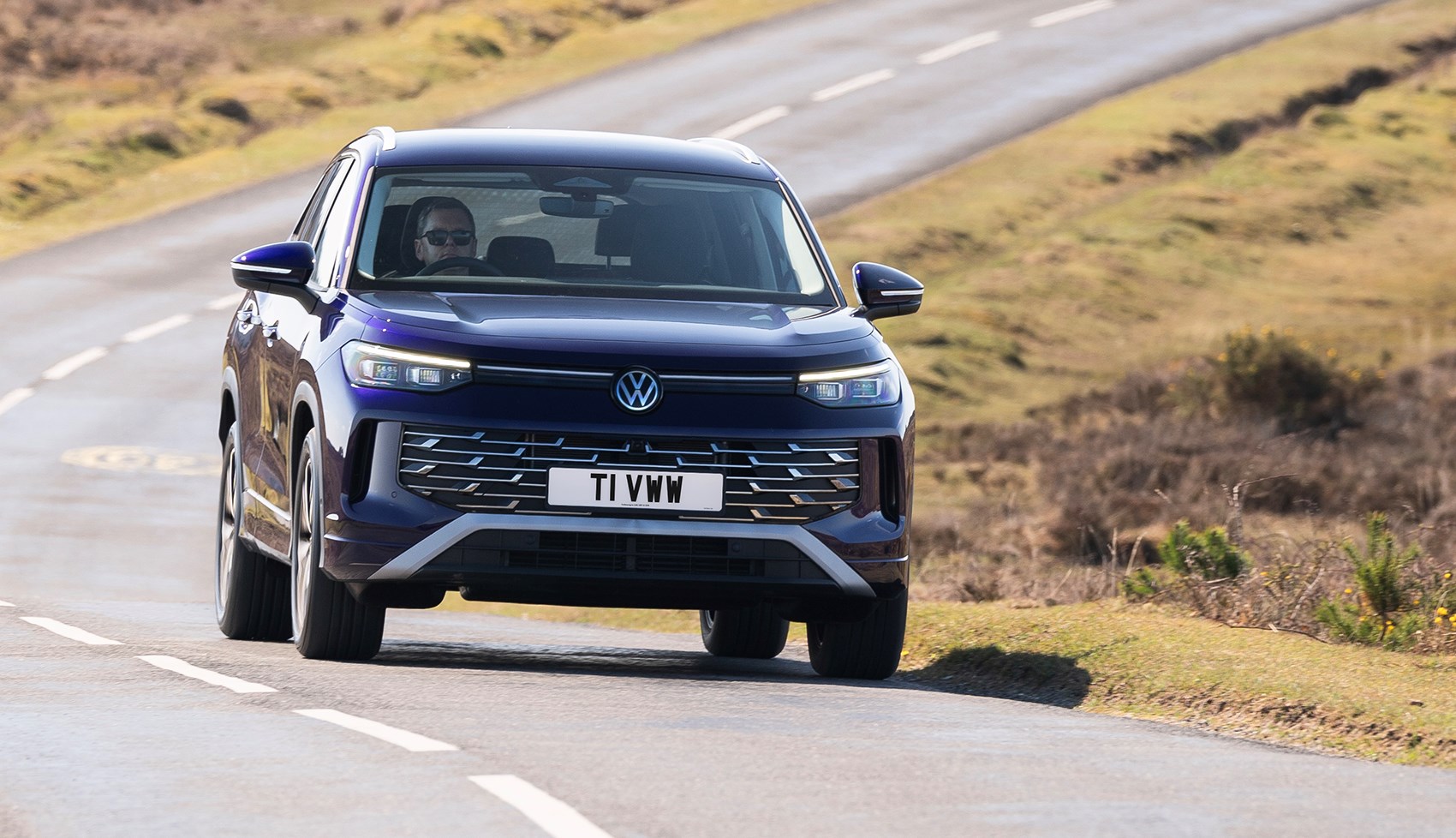
Even in the diesel, cabin noise is well suppressed – helped no doubt by the standard-fit accoustic glass. VW claims a 5db improvement in cabin noise over the Tiguan Allspace, and it’s a believable figure. The Tayron glides along effortlessly, and it’s in these quiet moments that the car’s refinement really shines. Our overriding impression of the car was its sense of ease – even the touchscreen, while still not perfect, is vastly easier to use with larger icons and a shortcut button to turn off the infernal lane assist. Chapeau!
The adaptive twin-valve dampers, borrowed from the likes of the Cayenne, and standard-fit XDS across the range, offer great body control over broken UK road surfaces, with low-roll cornering and surprisingly eager turn-in from the slightly-dead feeling steering. Even sudden potholes or motorway joins barely register in the cabin, being shrugged off with disdain. The only thing that marrs the overall dynamics is the soft-feeling brake pedal in the PHEV versions.
The Tayron runs on standard steel springs but those sophisticated supplementary systems give a level of composure that we weren’t expecting. One curiosity: the system offers 15 settings for damper stiffness. In reality, most owners will just leave it in the default Comfort mode. There are also Eco, Sport and Individual drive modes, but again – Comfort suits it best. This is not a car that demands constant adjustment.
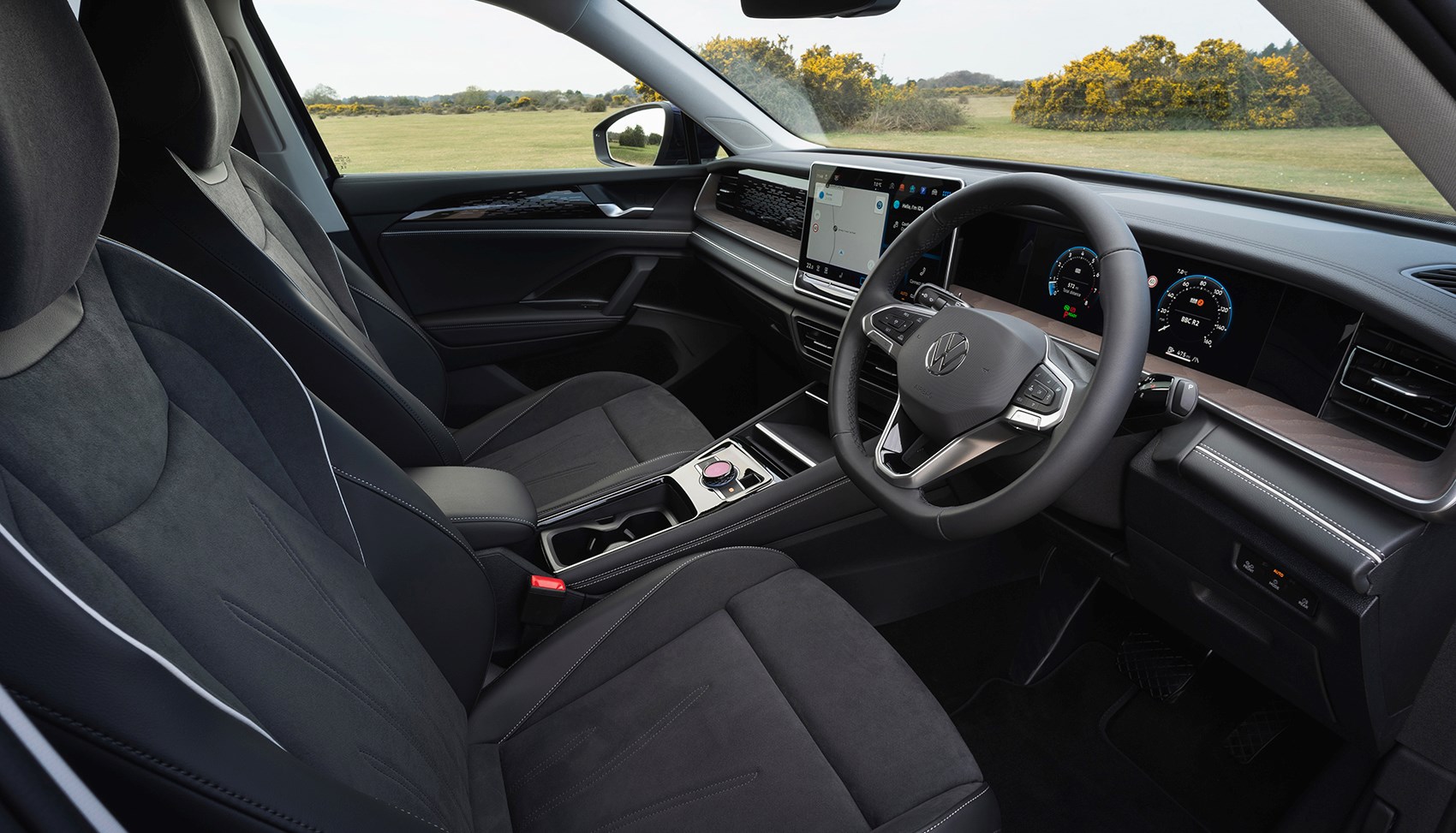
What’s it like inside?
Brilliantly practical and subtly upmarket – exactly what UK family buyers expect in a £40,000-plus SUV. Volkswagen used the dreaded P-word in its presentation, and truth be told, the Tayron is a return to more traditionally premium-feeling interior than some of its more recent efforts. The firm’s customers are a conservative lot, and this plays to their tastes. In many ways, Skoda had been eating VW’s lunch here, and, but Tayron and the Kodiaq feel level pegging in this department.
A vast touchscreen dominates the dashboard, available in 12.9 or 15.1-inch formats depending on spec. Thankfully, it’s more responsive and easier to use than previous VW efforts, with clearer icons and configurable shortcut buttons. It still doesn’t replace the convenience of physical controls, but VW has at least included a physical rotary controller for volume, which doubles up as the drive mode selector, and those dreaded sliders are illuminated, so won’t leave you too baffled.
The middle row gets the most attention. It slides, reclines and folds flat, and there’s ample legroom even for taller adults – and the kids should be happy thanks to a couple of USB ports and an armrest that doubles as an iPad stand. Hat tip to the Renault Scenic for coming up with that idea first.
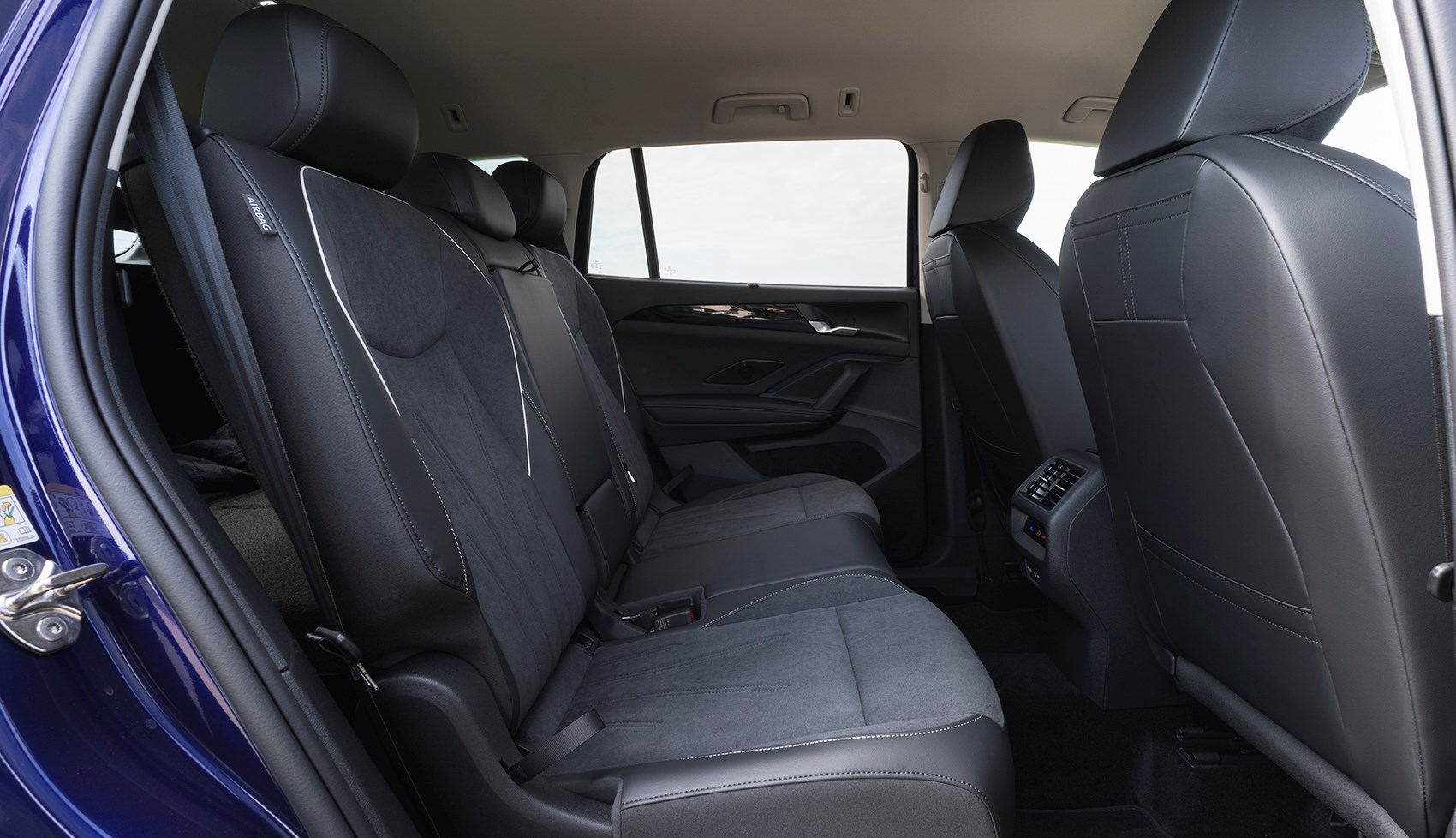
In seven-seat versions, the third row is best reserved for children and teenagers at a push – adults will struggle with both head- and legroom, although we managed to squeeze a six-footer very snugly behind another six-footer.
Boot space is generous, offering up to 805 litres in five-seat configuration on non-PHEV models, dropping to 705 litres in plug-in hybrids. With all seven seats in place, there’s still 177 litres available. It’s not class-leading, but it’s right in the mix with the Skoda Kodiaq and Kia Sorento.
VW’s ChatGPT-powered voice assistant is standard across the range. You still need to say ‘Hey IDA’ to activate it, but it can now understand and respond to follow-up questions without prompting it to do so, adding a degree of usefulness that few rivals match. We didn’t get too much of a chance to play with it, so are looking forward to revisiting that properly.
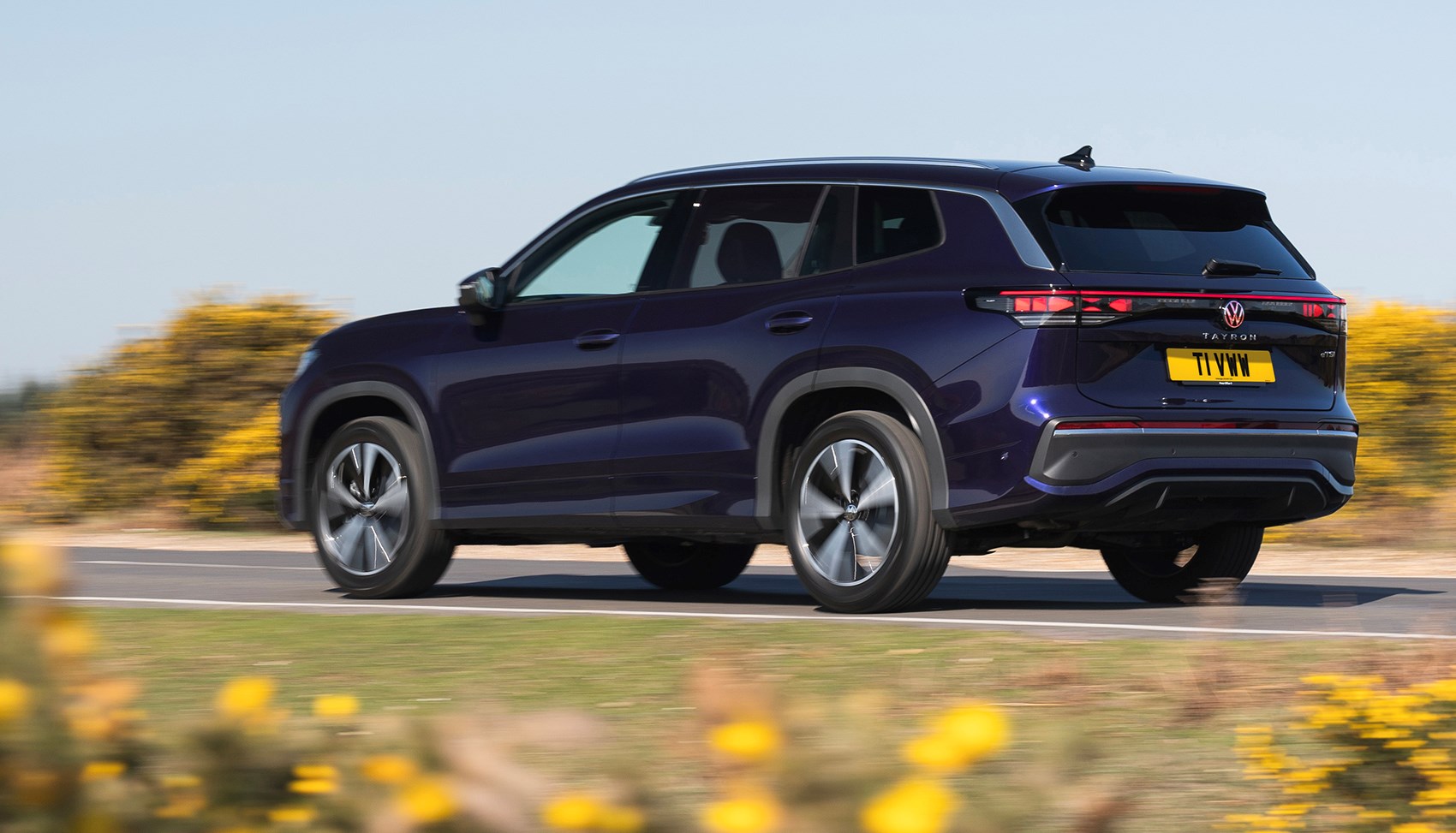
Before you buy
This mid-size, seven-seat SUV segment is smaller than you might think in the UK, but the Tayron still faces competition from several directions. The closely-related Skoda Kodiaq now comes with a plug-in hybrid option and remains a benchmark for value and space. The Kia Sorento is one of the few PHEVs that retains its third row of seats, making it a strong contender for families.
The Peugeot 5008 offers both ICE and surprisingly excellent electric versions, though there’s no plug-in hybrid variant (yet). The Land Rover Discovery Sport adds off-road credibility and less third-row room to the mix, while the Hyundai Santa Fe continues to impress with hybrid and PHEV drivetrains and generous kit levels.
Verdict
This is not a car that thrills – and that’s precisely its appeal, as it plays to its audience so well. The Tayron doesn’t engage the senses with fizzing dynamics or evocative styling, but instead delivers on every major family car metric: it’s practical, refined, easy to live with and good value for money given the spec.
In an era of increasingly complicated seven-seater SUVs, the Tayron is like a greatest hits album from Volkswagen – all the refinement, practicality and ease-of-use, without any unwanted remixes. It feels like the return of the ‘old VW’ values. Given the Skoda Kodiaq also does this well, it’s a tough call as to which VW Group product does it better. Chips down, we’d give the nod to Volkswagen.
Either way, the Tayron reminds us of the old strapline: ‘If only everything in life was as reliable as a Volkswagen.’ It doesn’t excite, but it does function rather well – and when you’ve got children to wrangle and a week’s worth of shopping to carry, that’s exactly what matters.